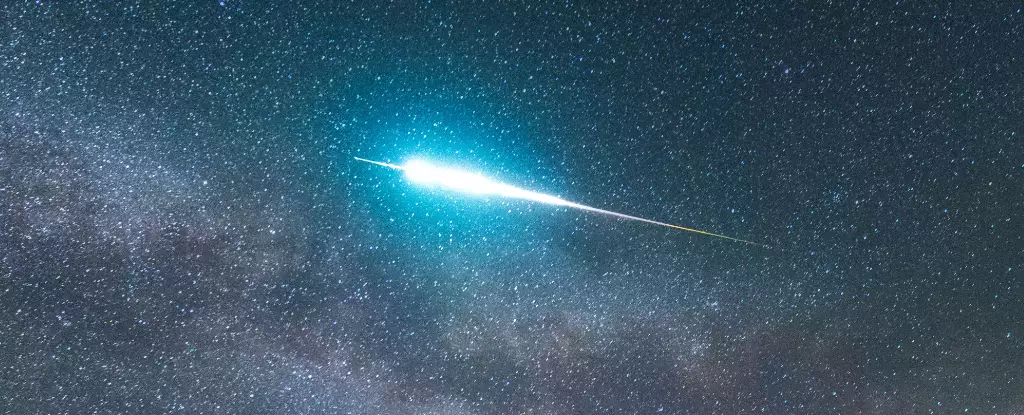On a special evening this week, skywatchers are in for a treat as two meteor showers, the Southern Delta Aquariids and Alpha Capricornids, are set to peak simultaneously. According to planetary astronomer Nick Moskovitz, the best time to witness this cosmic event is between 2 am and 4 am local time. While individuals in the Southern Hemisphere are expected to have a superior view, those in the Northern Hemisphere can still enjoy the show by following a few simple tips.
If you find yourself in the US, looking towards the southern horizon away from any light pollution can enhance your chances of spotting these celestial phenomena. Moskovitz advises looking south as meteors travel in all directions from the Southern Hemisphere. Additionally, it is important to note that no specialized equipment is required, and the naked eye is often sufficient for observing these fleeting streaks of light across the night sky.
One crucial aspect of meteor shower watching is patience. Moskovitz highlights the significance of allowing your eyes to adjust to the darkness, recommending a minimum of 15 minutes for optimal viewing. Rushing the experience may result in missing out on the true beauty of these natural wonders. By finding a comfortable location, settling in, and dedicating time to observe the night sky, spectators can increase their chances of witnessing numerous shooting stars.
Individually, the Southern Delta Aquariids and Alpha Capricornids may not be as prominent as other well-known meteor showers like the Perseids. However, the combined display presents a unique opportunity to witness a diverse range of meteors in a single night. The Southern Delta Aquariids typically produce around 25 shooting stars per hour, while the Alpha Capricornids yield approximately five. One distinguishing feature of the Alpha Capricornids is their ability to create brilliant fireballs, which are highly sought-after by astronomy enthusiasts.
Meteor showers occur when Earth passes through debris left behind by comets in its orbit around the Sun. The particles, ranging from dirt to ice, enter the atmosphere and burn up upon contact, resulting in the luminous trails that we see as shooting stars. In the case of the double meteor shower, the simultaneous occurrence of two streams of debris close to each other is a rare coincidence that amplifies the spectacle for observers on Earth.
In the realm of celestial events, the dual display of the Southern Delta Aquariids and Alpha Capricornids is a noteworthy occurrence worth experiencing. Whether one is an avid stargazer or a casual observer, the beauty and wonder of meteor showers serve as a reminder of the vast universe beyond our own planet. As we gaze upwards and witness these cosmic fireworks, we are invited to reflect on the mysteries of the cosmos and our place within it.


Leave a Reply